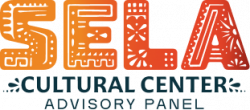We want to hear your ideas and comments regarding the future of the SELA Cultural Center. Listed below are public comments that have been submitted through the English page of our website. To view comments submitted in Spanish, navigate to the top right hand corner of this page and click ESPAÑOL.
To submit your public comment, add a comment through the form below. Public comments are reviewed for appropriate language and will be added to this page on an ongoing basis.

2 Responses
Would love to see local Latinx artists have the opportunity curate art exhibitions. Solo shows and group shows.
I would love to have a space that is committed to bridging the cultures past and present that have called SELA their home. I want the center to be a place of deep reverence for all the forms our cultures have taken across history, not a place formed (with good intentions) to honor only what our advisory council may have experienced of SELA in their lifetime. I want the center to be a place to help support our community’s understanding of the many histories of what we now call SELA across time including the colonial period, rancherias, WWI, freeways, WWII, White flight, deindustrialization, and the war on drugs, to name a few. The SELA cultural center is an opportunity to materially support the people indigenous to the lands we have all called home, and acknowledge the ways cultural change here is shaped by legacies of exploitation.
While not a religious space, I feel it is important to connect with religious institutions within SELA to ensure we support cultural arts and histories with specificity and acknowledgement of the relationship between cultures. Even in cases where members may not live immediately locally to their place of worship, it is prescient that at one time in SELA they established themselves here; they are part of our community’s history and culture. Put differently, the cultural center is an opportunity to highlight how connected SELA is to other parts of the city, county, metro area, and in the case of immigrant communities, to their homelands and diasporic communities.
In my own city, the Downey Historical Society, a local repository of history relevant to SELA is struggling to be housed within our city library system; how many other similar groups exist across SELA that we can bring together in the cultural center? Why not create both extensive archive and collective future?